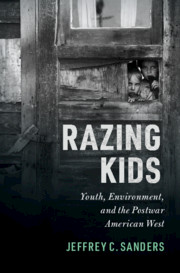5 - “Save the Family Farm”
Child Labor, Pesticides, and Green Consumerism
Published online by Cambridge University Press: 10 December 2020
Summary
This chapter explores the intended and unintended actions of rural people and their allies during the War on Poverty who significantly pushed an alternative image of family farm environmental politics onto the urban table of public concern by the 1980s. Farmworker co-ops and consumer-focused activism in the mid-1960s prefigured these consumer-based and child-focused strategies of food activism of the 1980s. War on Poverty organizing in the West and the farmworker movement previewed the powerful potential combination of producer and consumer politics that helped to remake the image of the family farm in the minds of consumers. The emerging image linked everyday choices about food to the broader social and environmental contexts in which children’s health was always paramount. This chapter emphasizes the parallel and connected story of counterculture or alternative agriculture activism of the 1970s and 1980s as well, a movement that emerged to fill the vacuum of trust in industrial agriculture and that saw great successes in bridging the gap between urban consumers and rural producers around concerns for small-scale, local, and pesticide-free foods. But the question was always, Whose children?
Keywords
- Type
- Chapter
- Information
- Razing KidsYouth, Environment, and the Postwar American West, pp. 215 - 268Publisher: Cambridge University PressPrint publication year: 2020



